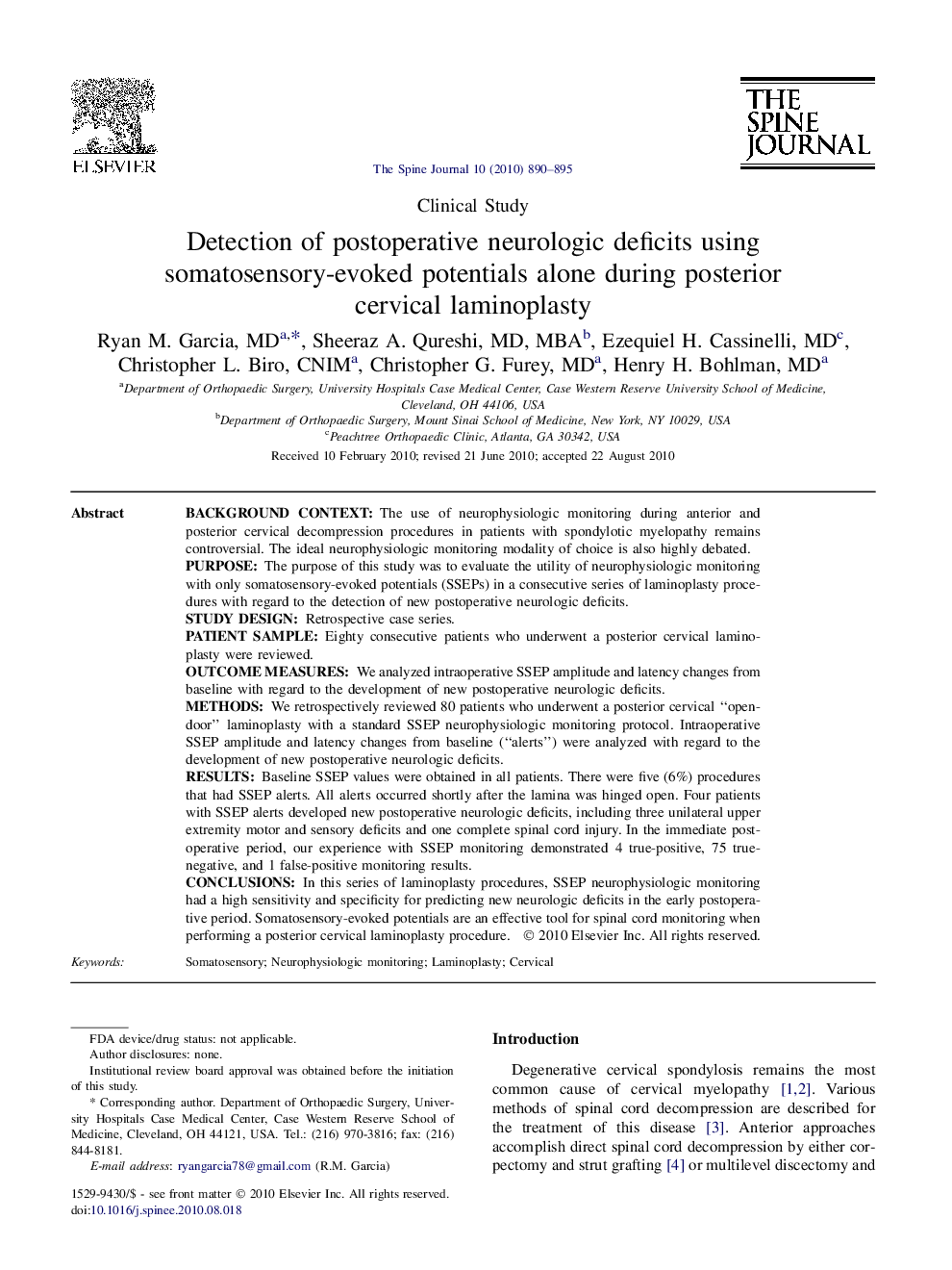| کد مقاله | کد نشریه | سال انتشار | مقاله انگلیسی | نسخه تمام متن |
|---|---|---|---|---|
| 4098279 | 1268611 | 2010 | 6 صفحه PDF | دانلود رایگان |

Background contextThe use of neurophysiologic monitoring during anterior and posterior cervical decompression procedures in patients with spondylotic myelopathy remains controversial. The ideal neurophysiologic monitoring modality of choice is also highly debated.PurposeThe purpose of this study was to evaluate the utility of neurophysiologic monitoring with only somatosensory-evoked potentials (SSEPs) in a consecutive series of laminoplasty procedures with regard to the detection of new postoperative neurologic deficits.Study designRetrospective case series.Patient sampleEighty consecutive patients who underwent a posterior cervical laminoplasty were reviewed.Outcome measuresWe analyzed intraoperative SSEP amplitude and latency changes from baseline with regard to the development of new postoperative neurologic deficits.MethodsWe retrospectively reviewed 80 patients who underwent a posterior cervical “open-door” laminoplasty with a standard SSEP neurophysiologic monitoring protocol. Intraoperative SSEP amplitude and latency changes from baseline (“alerts”) were analyzed with regard to the development of new postoperative neurologic deficits.ResultsBaseline SSEP values were obtained in all patients. There were five (6%) procedures that had SSEP alerts. All alerts occurred shortly after the lamina was hinged open. Four patients with SSEP alerts developed new postoperative neurologic deficits, including three unilateral upper extremity motor and sensory deficits and one complete spinal cord injury. In the immediate postoperative period, our experience with SSEP monitoring demonstrated 4 true-positive, 75 true-negative, and 1 false-positive monitoring results.ConclusionsIn this series of laminoplasty procedures, SSEP neurophysiologic monitoring had a high sensitivity and specificity for predicting new neurologic deficits in the early postoperative period. Somatosensory-evoked potentials are an effective tool for spinal cord monitoring when performing a posterior cervical laminoplasty procedure.
Journal: The Spine Journal - Volume 10, Issue 10, October 2010, Pages 890–895